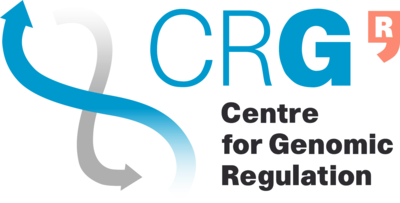Difference between revisions of "Publication:20190220140427"
From Bioinformatics Core Wiki
(Created page with "{{Publication |URL=https://doi.org/10.1038/s41563-019-0287-6 }} {{Annotation}}") |
Jponomarenko (Talk | contribs) |
||
| Line 2: | Line 2: | ||
|URL=https://doi.org/10.1038/s41563-019-0287-6 | |URL=https://doi.org/10.1038/s41563-019-0287-6 | ||
}} | }} | ||
| − | {{Annotation}} | + | {{Annotation |
| + | |Annotation=This paper is the result of the Biocore's collaboration with the Institute for Bioengineering of Catalonia (IBEC), in the frame of the Barcelona Institute of Technology (BIST), Barcelona, Spain. Topics: human organoids, cell differentiation. Impact Factor 47. | ||
| + | }} | ||
Latest revision as of 16:14, 9 June 2020
| Publication | |
|---|---|
| URL | https://doi.org/10.1038/s41563-019-0287-6 |
| Title | Fine tuning the extracellular environment accelerates the derivation of kidney organoids from human pluripotent stem cells
|
| Authors | Elena Garreta, Patricia Prado, Carolina Tarantino, Roger Oria, Lucia Fanlo, Elisa Martí, Dobryna Zalvidea, Xavier Trepat, Pere Roca-Cusachs, Aleix Gavaldà-Navarro, Luca Cozzuto, Josep M. Campistol, Juan Carlos Izpisúa Belmonte, Carmen Hurtado del Pozo, Nuria Montserrat |
| Date | 2019-04
|
| Publisher | Nature Materials |
| DOI | 10.1038/s41563-019-0287-6 |
| Tag | Biomaterials, Biomaterials – cells, Embryonic stem cells, Pluripotent stem cells, Stem cells |
Abstract:
The generation of organoids is one of the biggest scientific advances in regenerative medicine. Here, by lengthening the time that human pluripotent stem cells (hPSCs) were exposed to a three-dimensional microenvironment, and by applying defined renal inductive signals, we generated kidney organoids that transcriptomically matched second-trimester human fetal kidneys. We validated these results using ex vivo and in vitro assays that model renal development. Furthermore, we developed a transplantation method that utilizes the chick chorioallantoic membrane. This approach created a soft in vivo microenvironment that promoted the growth and differentiation of implanted kidney organoids, as well as providing a vascular component. The stiffness of the in ovo chorioallantoic membrane microenvironment was recapitulated in vitro by fabricating compliant hydrogels. These biomaterials promoted the efficient generation of renal vesicles and nephron structures, demonstrating that a soft environment accelerates the differentiation of hPSC-derived kidney organoids.
The generation of organoids is one of the biggest scientific advances in regenerative medicine. Here, by lengthening the time that human pluripotent stem cells (hPSCs) were exposed to a three-dimensional microenvironment, and by applying defined renal inductive signals, we generated kidney organoids that transcriptomically matched second-trimester human fetal kidneys. We validated these results using ex vivo and in vitro assays that model renal development. Furthermore, we developed a transplantation method that utilizes the chick chorioallantoic membrane. This approach created a soft in vivo microenvironment that promoted the growth and differentiation of implanted kidney organoids, as well as providing a vascular component. The stiffness of the in ovo chorioallantoic membrane microenvironment was recapitulated in vitro by fabricating compliant hydrogels. These biomaterials promoted the efficient generation of renal vesicles and nephron structures, demonstrating that a soft environment accelerates the differentiation of hPSC-derived kidney organoids.
| Annotation | This paper is the result of the Biocore's collaboration with the Institute for Bioengineering of Catalonia (IBEC), in the frame of the Barcelona Institute of Technology (BIST), Barcelona, Spain. Topics: human organoids, cell differentiation. Impact Factor 47. |
|---|
